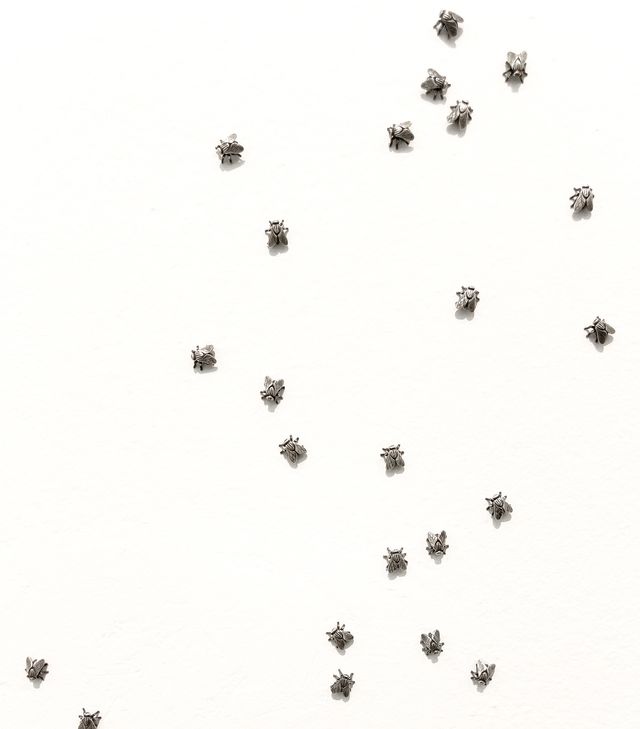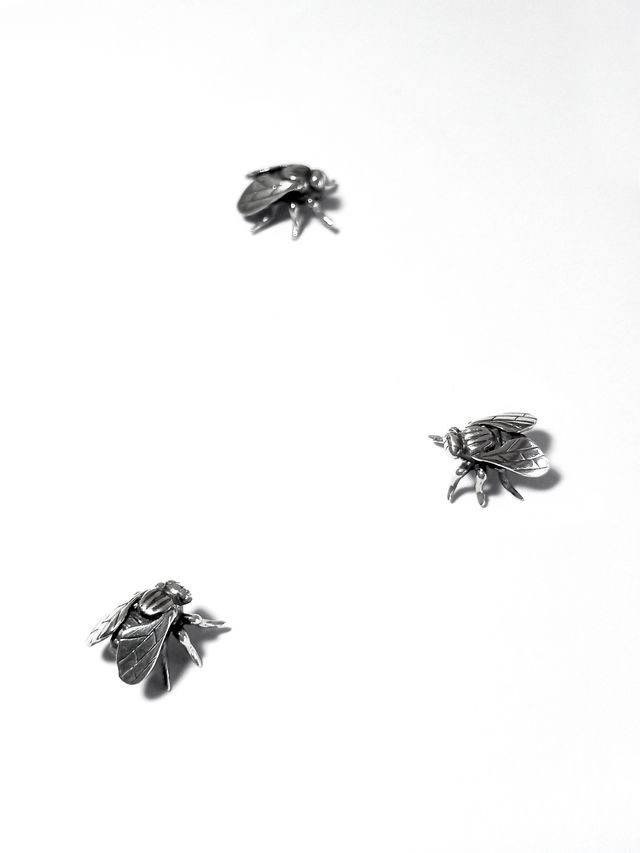Andres Bedoya’s installation Moscas (2021-2023) scatters a swarm of 100 cast-silver flies across the wall. Rendered at lifesize, Bedoya’s silver flies leverage the seductive aesthetics of their material, referencing colonialism and the exploitation of Bolivia’s natural resources. Latin American art is mostly understood in relation to the tropics, but what does it mean to be an artist from the Andes mountains? What is their relationship to nature? What is the history of natural resources in these elevated geographies?
Located in modern-day Bolivia, Cerro Rico (Spanish for “Rich Mountain”) is famous for the unimaginable quantities of silver extracted by the Spanish Empire and transported back to Europe. Some 3 million Quechua Indians were put to work there over the years. Hundreds of thousands died, casualties of cave-ins, or killed by overwork, hunger and disease. This brutal extraction of extraordinary wealth led to the generational poverty and political dysfunction that persists today.
The addition of a trompe l’oeil fly became a recurring feature in some 15th and 16th century European paintings, a way for painters to demonstrate their skills while also incorporating metaphors of corruption, sin, or mortality. As with many of Bedoya’s other works, silver as a material is utilized for its symbolic and historical significance. The precious metal versus the fly, the suggestion of swarming and dispersing, and the nature of the work itself acts as a poetic distillation of the region’s complex history.
Contact
Website: www.situations.us
Email: [email protected]


